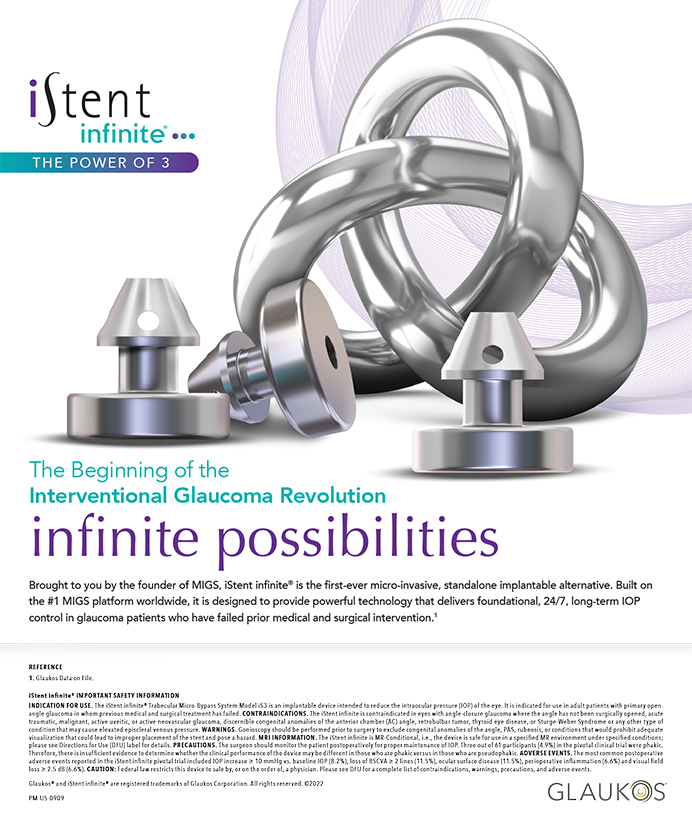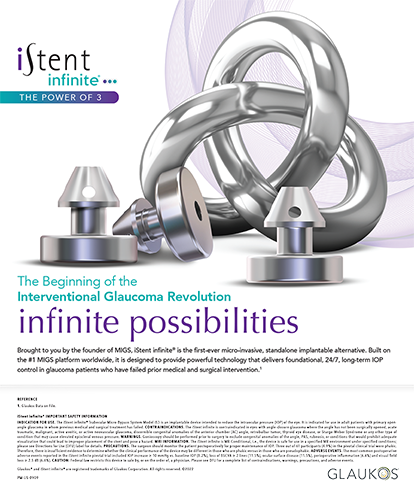
The lifecycle of refractive surgery patients starts before they step foot into your office. Our practice, like many others, does not have a large advertising budget for refractive surgery. We therefore rely on a referral base generated by word of mouth and the reputation of our institution. Often, patients who are under my care for dry eye disease or cataracts refer their friend or family member to me for refractive surgery. Once an inquiry for a refractive surgery evaluation is submitted, we make every effort to contact and schedule patients for an appointment as quickly as possible. Depending on where you practice, patients likely have many options for a refractive surgeon. Asking them to wait weeks or months for an appointment puts you at risk of losing them to someone else.
ESTABLISHING A GOOD RAPPORT
Our typical refractive surgery patient is young and healthy. It is common for this to be the first time they undergo surgery. Their anxiety level may be heightened, so I take my time during the consultation to guide them through their options and what to expect on the day of the procedure. I make it a point to tell patients how much time they should plan to take off work, which in most cases is not more than a few days.
Like many of the procedures we perform in ophthalmology, the actual time spent in surgery is a fraction of the lifecycle of a refractive surgery patient. The bulk of the lifecycle happens after surgery.
Most patients follow a similar postoperative schedule regardless of the type of refractive procedure they had, but the focus of each visit varies. After PRK, much of my time is spent reassuring patients and reaffirming the prolonged recovery from this type of surgery. After LASIK, I remind patients how important it is to avoid touching their eyes. And after phakic IOL surgery, I emphasize how important it is for patients to return for their follow-up appointments, even when they feel like everything is perfect, because we need to monitor their IOP and check the vault of their implanted lens.
We like to see refractive surgery patients at regular intervals for the first year after their procedures. Thereafter, we keep patients engaged with our practice by encouraging them to continue following up for regular dilated eye exams. It is also important to remember that many of these patients have axial myopia and should have their peripheral retinas examined periodically.
MAINTAINING THE RELATIONSHIP
From a practice-building standpoint, maintaining the relationship with refractive surgery patients—who are typically happy with their outcomes—long after their surgery has many upsides.
Top Three Reasons to Maintain the Refractive Surgery Patient Relationship
No. 1
It can lead to referrals, cultivating more patient lifecycles
No. 2
It can result in the prescribing of treatment for presbyopia
No. 3
It can develop into a secondary lifecycle for cataract surgery
First, it reminds them of their satisfaction and can prompt them to refer their friends and family for refractive surgery, cultivating more patient lifecycles. Second, as they age, presbyopia will inevitably set in. Identifying the condition early in these patients can avoid the misconception that their LASIK is wearing off. Even with proper education, patients can feel frustrated that the only recommendation is reading glasses. Now, we counsel patients that Vuity (pilocarpine HCl ophthalmic solution 1.25%, Allergan) is a pharmacologic treatment for presbyopia that can prolong the amount of time they maintain spectacle-free vision across a range of distances. Eventually, a visually significant cataract develops. People who were once refractive surgery patients are now cataract patients or, better put, refractive cataract patients who are starting a lifecycle of their own.
For a European perspective on this topic, click here to read an article by Erika N. Eskina, MD




